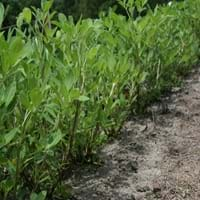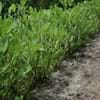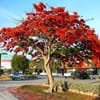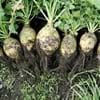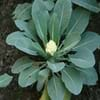Life Span
Annual
Perennial
Origin
South America
California
Types
Runner Peanuts, Virginia Peanuts, Spanish Peanuts
Not Available
Number of Varieties
Not Available
Habitat
Warmer regions
Chaparral, River side
USDA Hardiness Zone
5-9
7-10
AHS Heat Zone
Not Available
9-1
Sunset Zone
Not Available
H1, 4, 5, 6, 7, 8, 9, 10, 11, 12, 14, 15, 16, 17, 18, 19, 20, 21, 22, 23, 24
Habit
Clump-Forming
Upright/Erect
Minimum Width
Not Available
Flower Color
Yellow
White, Yellow
Flower Color Modifier
Bicolor
Bicolor
Fruit Color
Tan, Brown
Green, Tan
Leaf Color in Spring
Yellow
Gray Green
Leaf Color in Summer
Green, Gray Green
Gray Green
Leaf Color in Fall
Green, Gray Green
Gray Green
Leaf Color in Winter
Green, Gray Green
Light Green
Leaf Shape
Oval
Lance shaped
Plant Season
Spring
Spring, Summer
Sunlight
Full Sun
Full Sun
Type of Soil
Sandy
Loam, Sand
The pH of Soil
Acidic
Neutral, Alkaline
Soil Drainage
Well drained
Well drained
Bloom Time
Summer
Early Spring, Spring, Late Spring, Early Summer, Summer
Tolerances
Drought
Drought
Where to Plant?
Ground, Pot
Ground
How to Plant?
Seedlings
Cuttings, Seedlings
Plant Maintenance
Medium
Medium
Watering Requirements
Water daily during growing season, Water more in summer
Needs watering once a week, Water well when planted
In Summer
Lots of watering
Lots of watering
In Spring
Moderate
Moderate
In Winter
Average Water
Average Water
Soil pH
Acidic, Neutral
Neutral, Alkaline
Soil Type
Loam, Sand
Loam, Sand
Soil Drainage Capacity
Well drained
Well drained
Sun Exposure
Full Sun, Partial Sun
Full Sun
Pruning
No pruning needed
prune nearly to the ground in late fall
Fertilizers
5-10-10 fertilizer, High amounts of nutrients, Magnesium, Phosphorous, Potassium
organic fertlizers
Pests and Diseases
Red blotch
Verticillium Wilt
Plant Tolerance
Drought
Drought
Flower Petal Number
Single
Single
Edible Fruit
Not Available
No
Fragrant Leaf
Not Available
No
Fragrant Bark/Stem
Not Available
No
Showy Foliage
Yes
Not Available
Foliage Texture
Medium
Not Available
Foliage Sheen
Matte
Not Available
Invasive
Not Available
Sometimes
Attracts
Flying insects, Insects
Bees, Birds, Butterflies
Allergy
Abdominal pain, Anaphylaxis, Asthma, Diarrhea, Eczema, Itchiness, Low blood pressure, sneezing, Swelling, Urticaria
no allergic reactions
Aesthetic Uses
Not Used For Aesthetic Purpose
Showy Purposes
Beauty Benefits
Good for skin, Skin Problems
Not Available
Environmental Uses
Air purification
Air purification
Medicinal Uses
Alzheimer’s Disease, Colon Cancer, Coronary diseases, Energy, Fertility, Fights Depression, Gallbladder Diseases, Heart problems, Infections, Minerals, Nerve pain, Regulates Blood Sugar, Stomach Cancer
antimicrobial, Astringent, Gum Problems, Stomach pain
Part of Plant Used
Seeds
Flower Stalk
Other Uses
For making oil, Used As Food, Used for producing cooking oil, Used in salads
Used as Ornamental plant
Used As Indoor Plant
No
No
Used As Outdoor Plant
Yes
Yes
Garden Design
Container, Edible, Herb / Vegetable, Tropical
Feature Plant, Groundcover, Mixed Border, Wildflower
Botanical Name
ARACHIS hypogaea
ROMNEYA coulteri
Common Name
Peanut
Matilija Poppy
In Hindi
मूंगफली
Matilija Poppy
In German
Erdnuss
Matilija Poppy
In French
Cacahuète
Matilija Poppy
In Spanish
Maní
Matilija amapola
In Greek
Αράπικο φιστίκι
Matilija παπαρούνας
In Portuguese
Amendoim
Matilija Poppy
In Polish
Arachid
Matilija Poppy
In Latin
Peanut
Matilija Poppy
Phylum
Vascular plant
Magnoliophyta
Class
Magnoliopsida
Magnoliopsida
Order
Fabales
Papaverales
Family
Fabaceae
Papaveraceae
Clade
Angiosperms, Eudicots, Rosids
Angiosperms, Eudicots
Tribe
Dalbergieae
Not Available
Subfamily
Faboideae
Papaveroideae
Properties of Peanut and Matilija Poppy
Wondering what are the properties of Peanut and Matilija Poppy? We provide you with everything About Peanut and Matilija Poppy. Peanut doesn't have thorns and Matilija Poppy doesn't have thorns. Also Peanut does not have fragrant flowers. Peanut has allergic reactions like Abdominal pain, Anaphylaxis, Asthma, Diarrhea, Eczema, Itchiness, Low blood pressure, sneezing, Swelling and Urticaria and Matilija Poppy has allergic reactions like Abdominal pain, Anaphylaxis, Asthma, Diarrhea, Eczema, Itchiness, Low blood pressure, sneezing, Swelling and Urticaria. Compare all the properties and characteristics of these two plants. Find out which of these plant can be used as indoor plant. If you are interested to decorate your house and garden, find out aesthetic uses, compare them and select the plant which will beautify your surrounding. Along with beautification, try comparing medicinal and edible uses of Peanut and Matilija Poppy and you can choose the plant having best and most benefits.
Season and Care of Peanut and Matilija Poppy
Season and care of Peanut and Matilija Poppy is important to know. While considering everything about Peanut and Matilija Poppy Care, growing season is an essential factor. Peanut season is Spring and Matilija Poppy season is Spring. The type of soil for Peanut is Sandy and for Matilija Poppy is Loam, Sand while the PH of soil for Peanut is Acidic and for Matilija Poppy is Neutral, Alkaline.
Peanut and Matilija Poppy Physical Information
Peanut and Matilija Poppy physical information is very important for comparison. Peanut height is 45.72 cm and width 91.44 cm whereas Matilija Poppy height is 120.00 cm and width Not Available. The color specification of Peanut and Matilija Poppy are as follows:
Peanut flower color: Yellow
Peanut leaf color: Yellow
Matilija Poppy flower color: White and Yellow
- Matilija Poppy leaf color: Gray Green
Care of Peanut and Matilija Poppy
Care of Peanut and Matilija Poppy include pruning, fertilizers, watering etc. Peanut pruning is done No pruning needed and Matilija Poppy pruning is done prune nearly to the ground in late fall. In summer Peanut needs Lots of watering and in winter, it needs Average Water. Whereas, in summer Matilija Poppy needs Lots of watering and in winter, it needs Average Water.
